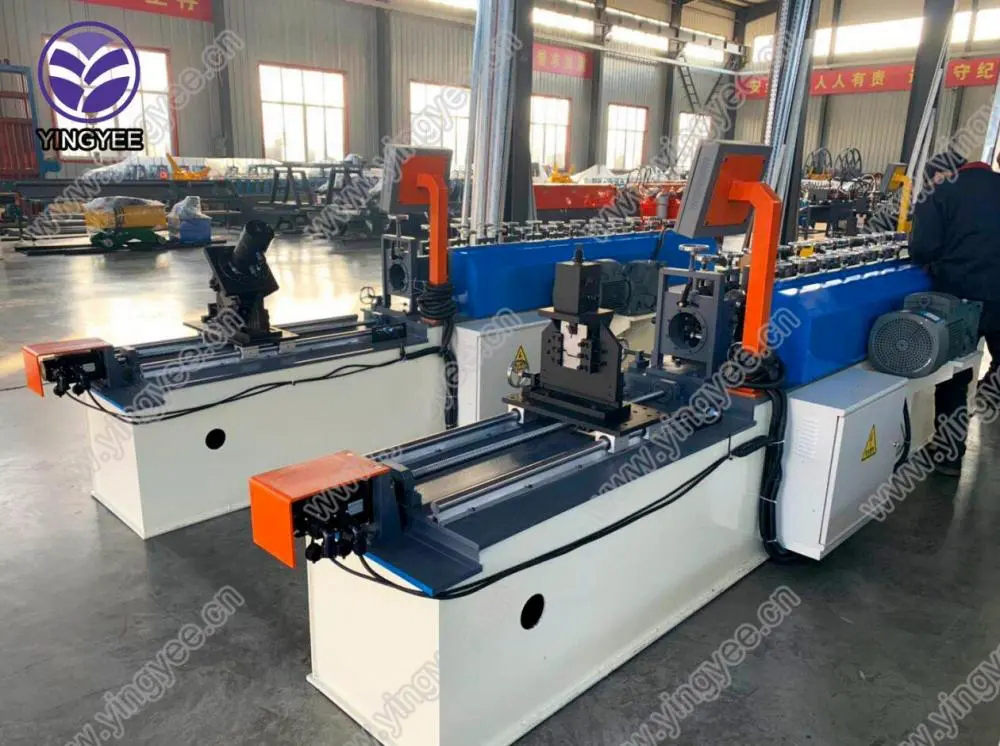
Steel Curving Unistrut Roll Forming Machines A Comprehensive Guide
In the modern construction and manufacturing landscape, efficiency and accuracy in producing structural components is paramount. One such component that has gained significant attention in recent years is Unistrut, a versatile framing system used for supporting and securing various types of loads. At the core of producing high-quality Unistrut products is the steel curving Unistrut roll forming machine.
What is Roll Forming?
Roll forming is a continuous process used to shape metal into desired profiles using a series of rollers. This method is particularly useful for creating long lengths of uniform cross-sections from metal strips, particularly steel. Roll forming is known for its high production speeds, reduced waste, and the ability to produce complex shapes that would be difficult or impossible to achieve with traditional fabrication methods.
The Importance of Steel Curving
One of the most valuable features of Unistrut is its adaptability to various applications, which often require curved or bent materials. The steel curving aspect of the Unistrut roll forming machine enhances this adaptability, allowing manufacturers to produce curved Unistrut sections that can easily conform to architectural designs or engineering requirements.
Machine Design and Functionality
Steel curving Unistrut roll forming machines are designed with precision and durability in mind
. These machines typically consist of several key components1. Feeding Mechanism The machine starts by feeding flat steel strips into the roll forming process. The feeding mechanism ensures that the material is aligned properly for an accurate formation.
2. Roll Stations The heart of the machine consists of multiple roll stations. Each station gradually shapes the steel strip into the desired profile, with the final stations specifically designed for bending and curving.
3. Curving Jigs Specialized jigs are used post-roll forming to achieve the desired curvature. These jigs are adjustable, allowing for various radii of curvature depending on project specifications.

4. Cutting Unit After the desired shape and curvature have been achieved, a cutting unit will slice the material to the required lengths, ensuring a clean and precise finish.
5. Control System Modern roll forming machines are equipped with advanced control systems, often computerized, that allow for precise adjustments in speed, feed, and curvature specifications. This enhances both productivity and accuracy.
Applications
The applications of steel curving Unistrut roll forming machines are vast and varied. In the construction industry, these machines provide components used in the support structures of commercial and industrial buildings. Additionally, the ability to create curved Unistrut profiles makes them ideal for specialized architectural designs, such as domes and arches. Beyond construction, these components are also widely used in manufacturing environments, serving as supports for electrical conduit, piping, and HVAC systems.
Advantages of Using Roll Forming Machines
1. Efficiency Roll forming is a continuous process that significantly reduces production time compared to traditional methods. It allows for the simultaneous production of long sections, minimizing labor costs.
2. Material Utilization The process creates minimal waste, as it utilizes the entire width of the strip material through continuous shaping.
3. Versatility With the capability to produce various thicknesses, widths, and shapes, roll forming accommodates a wide range of customer requirements.
4. Quality and Consistency The automated nature of roll forming machines ensures consistency in production, resulting in high-quality components that meet stringent standards.
Conclusion
Steel curving Unistrut roll forming machines represent a vital link in the supply chain of modern construction and manufacturing. By providing a reliable method for creating curved and customized Unistrut profiles, these machines enable architects and engineers to bring their innovative designs to life. As technology continues to advance, the capabilities of roll forming machines are expected to expand, further enhancing their role in the efficient and effective production of structural components.